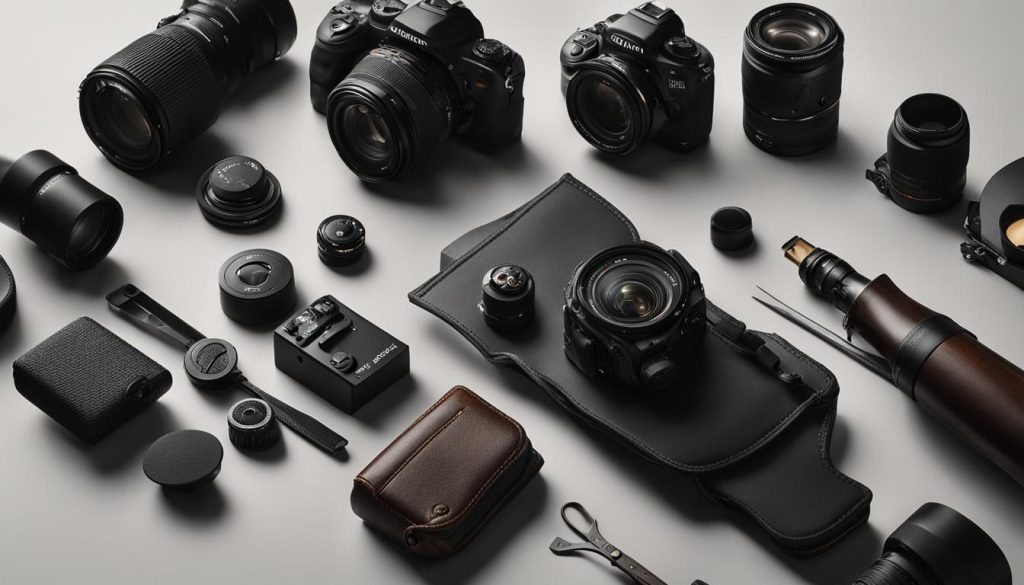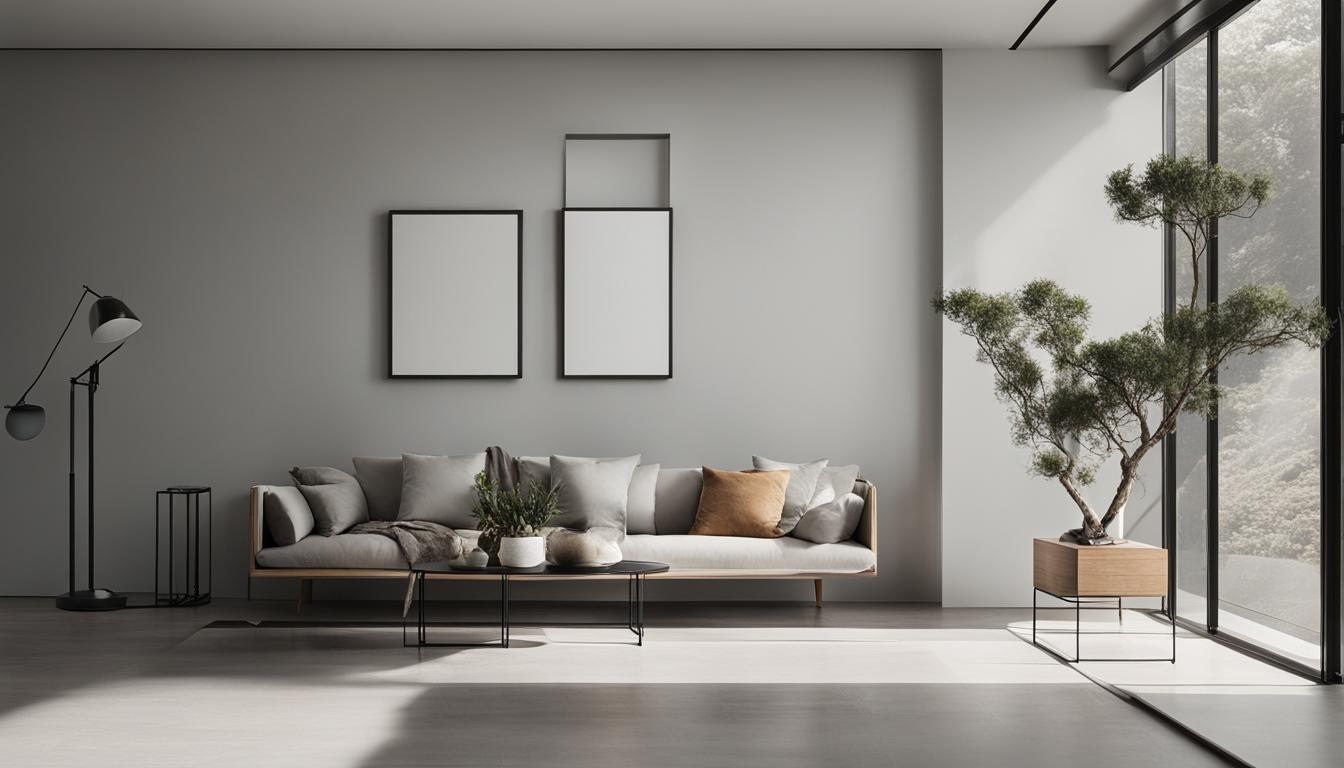Are you someone who seeks beauty in simplicity? Do you appreciate the elegance of understated design? Then you’ll love minimalist photography. This style of photography celebrates the beauty of simplicity and focuses on capturing the essence of a subject with minimal distractions. It’s all about stripping back the clutter and leaving only what’s essential to convey a message.
At its core, minimalist photography helps you to see the world in a new light. By removing the excess and focusing on the details, you can capture stunning, uncluttered images that communicate a sense of calm and beauty. So, let’s dive deeper into the world of minimalist photography and explore how you can capture simplicity in your photographs.
Key Takeaways
- Minimalist photography celebrates simplicity and focuses on conveying a message with minimal distractions.
- By removing the excess and focusing on details, you can capture stunning, uncluttered images that communicate a sense of calm and beauty.
- Mastering minimalist photography requires understanding its principles, having the right gear, and using specific techniques to simplify the frame and enhance the minimalist aesthetic.
- Studying the works of minimalist photographers can provide insight and inspiration for your own practice.
- Don’t be afraid to experiment and think outside the box to create unique and compelling minimalist images.
Understanding Minimalist Photography
Minimalist photography is the art of capturing simplicity. It is about conveying a sense of calm and beauty while keeping the focus on the subject. To understand minimalist photography, it’s important to know its definition, the principles of minimalism, and how composition plays a vital role in achieving a minimalist aesthetic in your photographs.
Minimalist Photography Definition
Minimalist photography involves simplifying your subject or frame to its most basic form. It is about removing any unnecessary elements and distractions, leaving only the essential aspects of the subject. Minimalism in photography should evoke a sense of visual clarity, simplicity and elegance.
Principles of Minimalism
The principles of minimalism are closely related to the definition of minimalist photography. It involves reduction, simplicity, and the belief that “less is more.” To achieve minimalism in your photographs, you should focus on capturing the essence of the subject, rather than trying to capture every detail. Minimalism requires a thoughtful subtraction of elements, leaving only the necessary components to create a powerful image.
Minimalist Composition
Composition is vital to attaining a minimalist aesthetic in your photographs. This involves the arrangement of elements within the frame of your photograph. The primary goal of minimalist composition is to remove any visual clutter, distractions, or elements that don’t add value to the photograph. Leaving plenty of negative space can also be very effective in minimalist composition. By understanding the basic principles of minimalist composition, you’ll be better equipped to create stunning and powerful images that truly capture the essence of your subject.
Essential Gear for Minimalist Photography
Minimalist photography is all about simplicity, and so is its gear. To capture stunning, uncluttered images, you need to have the right equipment that aligns with minimalist principles. Here’s what you need:
- A camera: Look for cameras that are lightweight, compact, and easy to use. Mirrorless cameras are a popular choice amongst minimalist photographers for their smaller size and greater portability. Some recommended options include the Sony A7 III and the Fujifilm X-T4.
- A lens: Prime lenses are a great choice for minimalist photography, as they are compact, lightweight, and usually have a wide maximum aperture, allowing you to achieve a shallow depth of field. Some popular options include the Sony FE 85mm f/1.8 and the Canon EF 50mm f/1.8 STM.
- Minimalist camera settings: To achieve the desired minimalist aesthetic, stick to simple camera settings. Use aperture priority or manual mode, a wide aperture to achieve a shallow depth of field, and a low ISO to reduce noise.
In addition to the camera and lens, there are a few other essentials to consider for minimalist photography:
- A tripod: A good tripod can help you achieve stable shots and can also be used creatively to create intentional camera movement. The Manfrotto BeFree Compact Travel Aluminum Alloy Tripod is a great option for its lightweight build and compact design.
- A camera bag: Look for a bag that is lightweight, durable, and has enough room for your essentials. The Peak Design Everyday Sling is a popular choice amongst minimalist photographers for its sleek design and compact form factor.
- Minimalist accessories: Keep it simple when it comes to accessories. A lens cleaning cloth, a spare battery, and a lightweight camera strap are all you need to get started.

Techniques to Master Minimalist Photography
Minimalist photography is all about the art of simplicity. To capture stunning minimalist shots, it’s essential to master some techniques that will help you create a clean and uncluttered frame. Here are a few techniques that will help you get started:
Simplifying the frame
One of the essential techniques in minimalist photography is simplifying the frame by removing any distracting elements. This will help you focus on the subject, and the image will be visually more appealing. To achieve this, try zooming in on the subject, and use a wide aperture to blur out the background. Don’t be afraid to experiment with different angles and perspectives to create a minimalist aesthetic.
Effective use of negative space
Negative space is the empty space around the subject, and it is an essential element in minimalist photography. It helps to draw attention to the subject and create a clean and uncluttered frame. To use negative space effectively, try to isolate the subject and create a balance between the subject and the negative space. Use lines and patterns to lead the viewer’s eye towards the subject and create a sense of harmony.
Importance of minimalistic color palettes
The use of a minimalistic color palette can also help create a minimalist aesthetic in photography. Try to stick to a few complementary colors and avoid bold, bright colors that could distract the viewer. The use of neutral colors like black, white, and grey can also help create a clean and uncluttered image.
Exploring lighting
The use of lighting can also enhance the minimalist aesthetic in photography. Try to use natural light or soft, diffuse artificial light sources to create a soft, delicate feel. Play with shadows and highlights to create depth and texture in the image. Experiment with different times of day to capture the perfect light that will highlight the subject.
By applying these techniques, you’ll be able to master minimalist photography and create stunning, uncluttered images that evoke a sense of calm and beauty.
Conclusion
Congratulations! You now have a comprehensive guide to mastering minimalist photography. By following the checklist and implementing the techniques discussed, you’ll be able to capture stunning, uncluttered images that epitomize simplicity.
Remember, the art of minimalism is all about letting the subject speak for itself, so focus on removing distractions and creating negative space to emphasize the beauty of your subject. By doing so, you’ll be able to create images that evoke a sense of calm and elegance.
Don’t be afraid to experiment with different camera settings and lighting techniques to see what works best for you and your style. Above all, have fun and embrace the beauty of simplicity in your photography.






